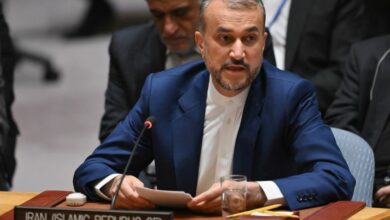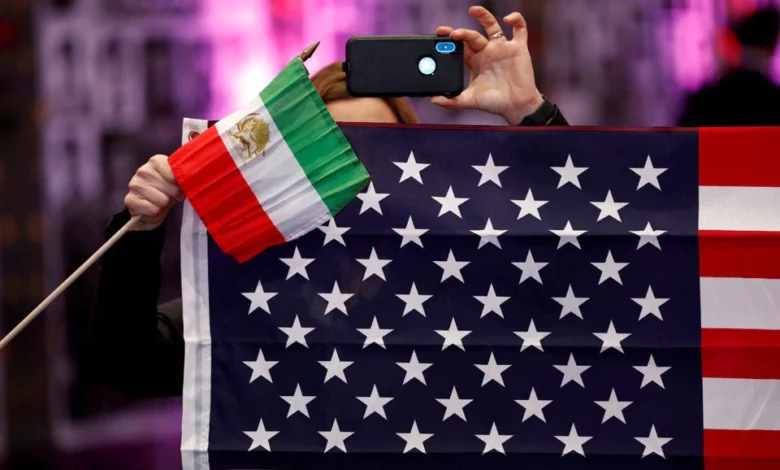
CNN – A woman dressed in black raises a framed portrait of her son, Siavash Mahmoudi, in the air as she paces the sidewalk in Iran’s capital, Tehran. “I am not scared of anyone. They told me to be silent. I will not be,” the woman seen in a viral social media video yells, her voice fraught with emotion.
“I will carry my son’s picture everywhere. They killed him.”
Mahmoudi’s mother is among many Iranians who claim the regime tried to silence them as they mourned loved ones slain in ongoing nationwide demonstrations.
But Iran’s protesters, and their supporters, are defiant. For weeks, a nationwide protest movement has relentlessly gathered momentum and appears to have blunted the government’s decades-old intimidation tactics. Slogans against the clerical leadership echo throughout the city. Videos of schoolgirls waving their headscarves in the air as they sing protest songs in classrooms have gone viral, as have images of protesters fighting back against members of the formidable paramilitary group Basij.
These are scenes previously believed to be unthinkable in Iran, where the Supreme Leader Ayatollah Khamenei rules with an iron fist. But experts say that these protests transcend Iran’s many social and ethnic divisions, breaking a decades-old barrier of fear and posing an unprecedented threat to the regime.
Across Iran, protesters seem intent on exposing the weaknesses of a clerical establishment which is widely accused of corruption and has stamped out dissent with arbitrary detentions and even mass executions.
Tehran has been convulsing with demonstrations since the death in mid-September of Mahsa (also known as Zhina) Amini, the 22-year-old Kurdish-Iranian woman who died after being detained by the country’s morality police for how she was dressed.
Protests crop up sporadically in various parts of the capital throughout each day. At night, a chant that has become a staple of the protests — “death to the dictator” — sounds from the rooftops of buildings. It’s a reference to Khamenei, who was once considered beyond reproach because of his elevated clerical status.
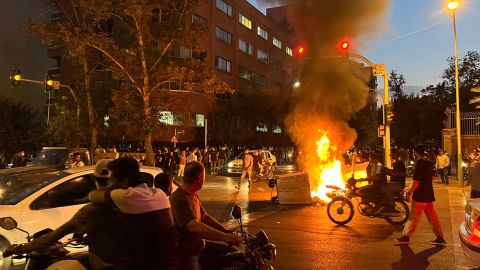
‘This is not the end’
Anti-regime demonstrations have also penetrated the Islamic Republic’s power bases, including the Shia holy cities of Mashhad and Qom. Ethnic minorities — notably Kurds in the country’s north and northwest, and Baloch people in the southeast — have also staged protests, enduring what appear to be some of the most brutal crackdowns, with scores reportedly killed.
Secondary schools and universities around the country are flashpoints, and women and girls have been taking off their mandatory headscarves, known as hijabs.
“These terrorists think that our generation is the previous generation. We are not. Let me assure you,” a protester from Tehran’s prestigious Sharif University of Technology told CNN, referring to Iranian police who had violently cracked down on demonstrators on campus, and detained scores of young people.
Social media video showed cars filling the streets shortly after news spread Sunday of the crackdown on students, horns blaring in solidarity with protesters as the showdown unfolded at the university, known for educating Iran’s best and brightest students.
“If the dust settles and we stop protesting, they are going to kill even more of us. They are going to detain even more people and they are going to turn us to North Korea,” the impassioned protester said. “This is not the end. I promise you that.”
CNN has not been able to independently verify the number of the dead and injured, but state media says 40 people have died since the start of demonstrations in mid-September. Rights group Amnesty International says at least 52 have been killed. Over 1,000 people are believed to have been detained, including journalists and artists.
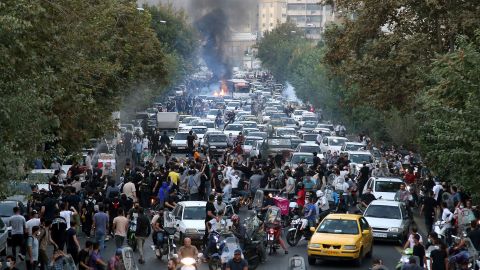
Last week, Amnesty International said it had obtained a leaked document which appeared to instruct commanders of armed forces in all provinces to “mercilessly confront” protesters, deploying riot police as well as some members of the military’s elite Revolutionary guards, the Basij paramilitary force and plainclothes security agents.
CNN has not seen the leaked documents obtained by Amnesty International and cannot verify the reporting. CNN has reached out to Amnesty International on how it received the leaked documents but hasn’t received a reply.
CNN has also reached out to Iranian government officials for a comment on Amnesty International’s reporting but hasn’t received a reply.
In addition, Amnesty International said it had seen evidence of sexual assault against female protesters – CNN has not been able to verify this. Social media video has also shown Iranian security forces dragging unveiled women through the streets by their hair.
An existential threat
The threat posed by these protests, analysts say, is existential to the regime, and is one of the biggest challenges the Islamic Republic has faced in years.
“These are primarily very, very young people, a younger generation who have apparently completely lost faith that this Islamic Republic can be reformed,” said Trita Parsi, executive vice-president at the Washington, DC-based Quincy Institute.
“They’re breaking from their previous generation who was seeking to reform the system from within,” Parsi added. “This new generation seems to not have any faith in that at all.”
The 83-year-old Khamenei, who commented on the protests for the first time on Monday, blamed – without evidence – the United States and Israel for fueling the protests. He also made clear that the regime would block the protesters’ desire for change.
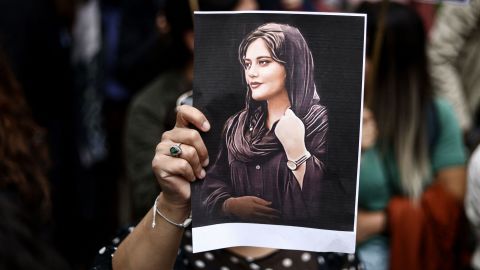
“I say clearly that these riots and the insecurity were engineered by the US and the occupying, false Zionist regime (Israel), as well as their paid agents, with the help of some traitorous Iranians abroad,” said Khamenei in his address.
The current protests may eventually be quashed or simply lose momentum, but analysts say Iran can expect another cycle of nationwide demonstrations in months to come. The latest demonstrations follow similar, but less widespread, protests against the government in 2019, 2017 and 2009.
“The protests transcend social sectarian boundaries, bringing together a much broader strata of Iranian society than we have seen in years,” said Ali Vaez, director of the International Crisis Group’s Iran Project. “But they suffer from the same shortcomings that the previous movements in Iran also suffered from. Primarily, the lack of leadership.
“It’s very difficult to be able to maintain and sustain a movement that over the long run will bring the regime to its knees without coordination and leadership,” Vaez said.
Still, the protesters appear bolder than ever, sensing a window of opportunity that could quickly close as Iran appears to near development of a nuclear weapon, which would both entrench the regime’s grip on power and deepen its isolation.
This is the scenario that anti-regime Iranians are trying desperately to avoid, said Vaez.
“The only thing worse than a regime that kills and represses its own people is a regime with a nuclear weapon and that kills and represses its own people,” he said.
CNN’s Hamdi Alkhshali, Artemis Moshtaghian, Hannah Ritchie, Mostafa Salem, Teele Rebane, Adam Pourahmadi and Celine Alkhaldi contributed to this report.


